A taxonomy is a behind-the-scenes structure that complements the visible navigation of your site. The framework that gets you there, however, is a bit more complicated. Let’s dive in.
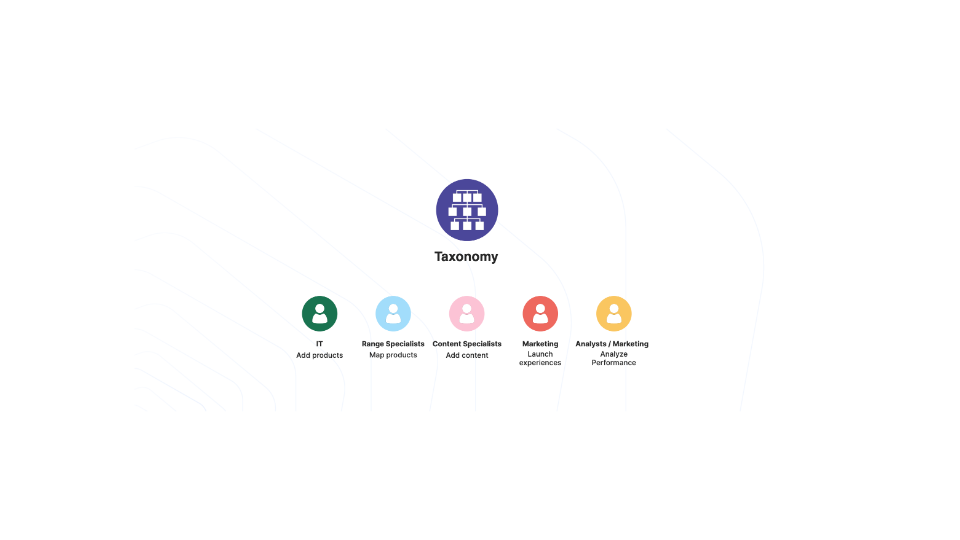
A taxonomy is a behind-the-scenes structure that complements the visible navigation of your site. The framework that gets you there, however, is a bit more complicated. Let’s dive in.
The landscape’s saturated, the market’s tougher to compete in, and shoppers have developed a taste for making their purchases rather quickly. To secure that personal connection in an instant, it’s more important than ever to provide your users with the relevant information as quickly as possible.
We’ve covered how taxonomies help achieve this, but none of it is possible without the appropriate framework. But what is a product taxonomy framework exactly, you might ask?
Simply put, it’s an intangible set of principles and guidelines that informs the creation, organization, and ongoing management of an eCommerce product taxonomy. This framework ensures that the resulting taxonomy is not just a static structure but a dynamic and strategic tool that aligns with the goals of the retailer using it.
As it is, a taxonomy is nothing without the framework that underpins it, as these two ideals serve different but interconnected purposes. Need more? Let me break down the difference:
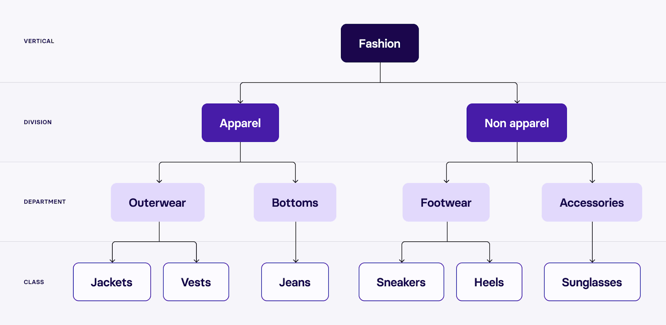 A simplified product taxonomy hierarchy | Source
A simplified product taxonomy hierarchy | Source
For eCommerce sites, product taxonomies are critical to an intuitive, well-orchestrated user experience. For shoppers to find the right product, they need to navigate the hierarchy, browse through categories, locate the product type they’re interested in, use attributes to narrow their selection, and locate the content that will help them decide what to purchase.
A framework makes this happen more easily. Here are some other reasons why:
Constructing a product taxonomy framework goes beyond just structure itself. It encompasses a methodology of rules, processes, and standards that serve the organization of products.
However, while it’s easy to define in theory, it’s a trickier concept to translate in practice. Largely because there are many interpretations, manifestations, and applications of what it looks like.
I say all this to emphasize that developing a framework is no easy feat. Building the structure that results in a taxonomy (especially an excellent one) is a fairly involved process, and full details on how to do so are beyond the reach of this blog post. Instead, we’re using this moment to introduce our way of working.
The Crobox Product Taxonomy Framework describes our way of delivering value to our customers. As a client who onboards with us, there are various steps that need to be taken before a product taxonomy can be tailored for your catalog. And in order to deliver on that promise, we rely on the stuff that sets us apart: our expertise in psychology and a vast array of product categories.
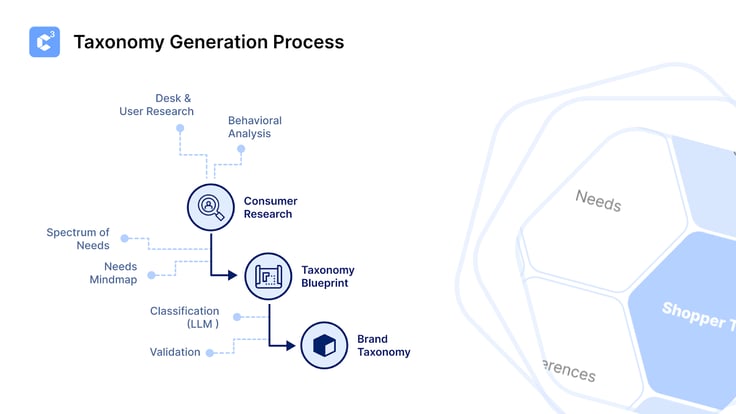
Taxonomy generation involves several moving parts. To cater to the evolving needs of a diverse customer base, the creation of a product taxonomy unfolds in a structured way.
First, a prescriptive blueprint is established to add descriptive elements that help the content be retrieved more effectively.
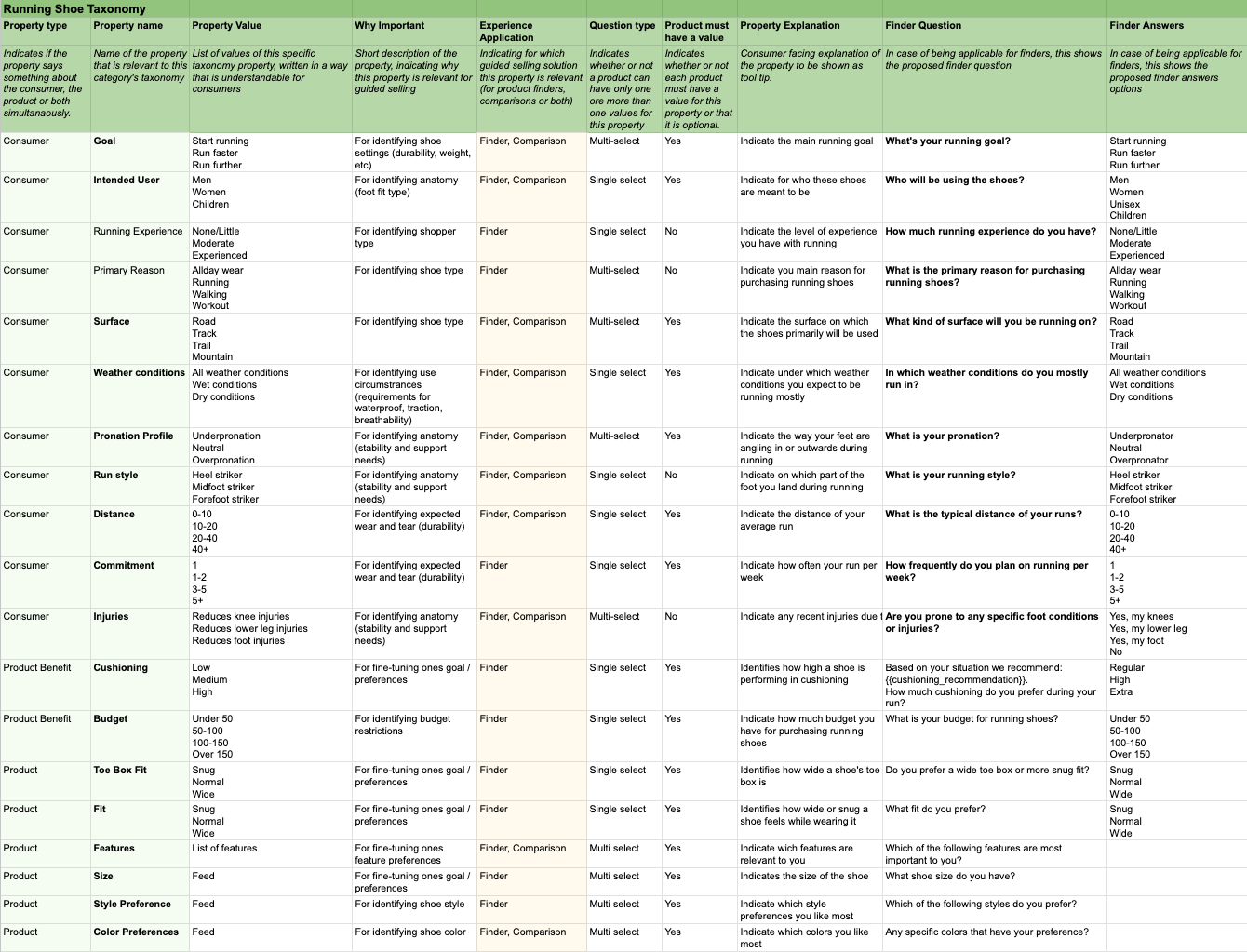
The above rendering is an example of what a filled-out product taxonomy for running shoes might look like.
Access this product taxonomy template in our Data Toolkit by filling in this form:
A product taxonomy is critical. We’ve established that. But when discussing its impact, it always comes back to the quality of your user experience.
More than just a classification system, a well-structured taxonomy serves as the guiding force behind a satisfying on-site search experience. In fact, some of the best-designed taxonomies make it easy for users to browse through relevant categories, spot the product type they fancy, and dive into the details that matter most.
What’s more, if users can't find products, the value is lost. A strategic taxonomy enhances discoverability. It ensures that items related or complementary to their search are readily presented, leading to increased upsells and cross-sells.
Here are some other important customer-facing, search-related reasons:
From an end user’s perspective, Boolean searching (which involves using commands like AND, OR, and NOT) is much more difficult than semantic searching (putting words in a box and letting the technology do the hard work of figuring out what users meant by them).
With Boolean searching, on the other hand, users need to have an understanding of what they want, what they don’t want, and how to phrase searches the right way. With semantic search, much of that work has already been done. Customers don’t have to think quite so hard to retrieve the information they want.
The hierarchical organizations used in categorization are also the key to how query expansion works. Using a Boolean search for “skinny jeans” will return only results that actually include the words “skinny jeans.”
Since retailers classify jeans as pants or bottoms, if one enters “jeans” in a search tool built on these principles, one would get results for “skinny” too, whether the word “skinny” appears or not.
Taxonomies make it possible to return results from across the entire hierarchical structure without actually having to enter all of the terms in the hierarchy.
There are many different ways subjects can be referred to in the English language. Taxonomies are able to take these synonyms into account in a designated vocabulary. This way, when someone searches for “yellow scarf” the query can return results for “golden scarf” too.
If the item tends to be referred to in one way, you can set a synonym as the preferred term so that the information is tailored to users’ specific needs.
Product data refers to the detailed information associated with individual products. It provides comprehensive details about each product, helping shoppers make more informed purchases.
When considering the relationship between a product taxonomy and the product data it contains, the product taxonomy provides the organizational structure, guiding how product data is categorized and presented. Each product's data is associated with a specific category within the taxonomy.
Every year, poor-quality product data costs retailers a lot of lost revenue. By enriching product data, you get to add extra layers of information, boost attribution, and make sure your customers get exactly what they need at the right moment.
The practice of product data enrichment is all about making the shopping experience an absolute delight for your customers. And properly Investing in a product data enrichment solution is crucial for retailers for several reasons:
Without proper product data, a taxonomy will not be very effective at serving its purpose. And in order to achieve both of these goals, a greater understanding of what drives your users is needed.
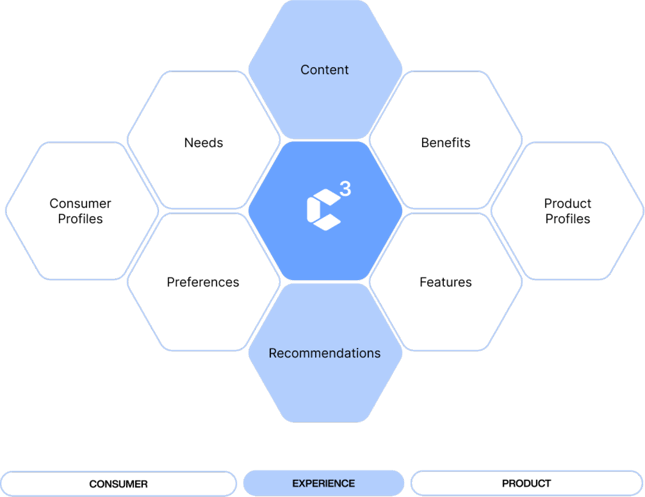
Customers comprise the heart of any eCommerce business’ purpose. Without them, the business can’t survive for very long. To better satisfy these customers and meet their diverse needs, a greater understanding of what drives them is required.
This is where the Crobox Category Canvas comes in – or as we fondly call it, C3!
The final step in building a Crobox Taxonomy Framework relies on the structure provided by this comprehensive model, crafted with love by our in-house behavioral psychologists and product category experts.
To enhance a retailer’s guided selling potential, we integrate customer, product, and experience aspects. This generates a taxonomy that provides a structure of relevant product properties
Why? Because C3 syncs your offerings with the unique quirks, cravings, and quirks (yes, we said quirks twice they're that important!) of each customer. By bridging the gap between a retailer and their customer, we create a symbiotic relationship that goes beyond mere transactional interactions.
When you get started with Crobox to build a guided selling experience of your own, this model will be the first step of your journey.
As domain experts, the C3 model plays a pivotal role. Reaching this level of expertise is contingent on comprehending a few essential elements:
With this, we get to build the most effective guided selling experience possible. Here are some other advantages to the C3 model:
The model integrates customer, product, and experience aspects, enabling more strategic decisions.
It relies on research and analytics for actionable outcomes, leading to increased engagement and boosted conversion rates – reducing the need for client-side research.
The model is agile enough to cater to diverse customer profiles, and flexible enough to cater to different product categories. This future-proofs the strategy, making it more adaptable to market changes.
C3's pre-researched, expert-backed approach enables immediate implementation, removing initial obstacles and accelerating time-to-market. This integrates immediacy, validated expertise, and resource optimization, freeing time to focus on execution and maximizing ROI from the get-go.
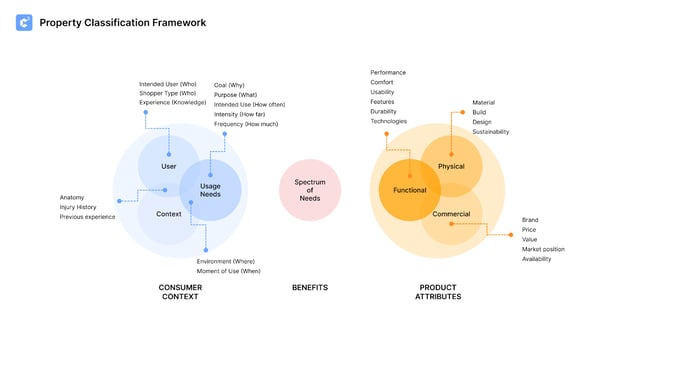
When customers describe what they are searching for, they tend to use language elements (like comparison and analogy). This simply means your product data should be humanized with the benefits and attributes your customers use and understand.
The key to successful product-data-driven selling is understanding that your business and your customers don’t naturally talk about your products the same way.
Product taxonomies serve this function by breaking down the “language barrier” that inhibits the sale and makes products more accessible to customers who are yearning for meaningful shopping.
Imagine for a moment, you're in a massive, sprawling bookstore, and you're on a quest to find a new book to read. There are books everywhere, from mystery novels to cookbooks, but to make your way around confidently is a bit like navigating a maze.
Now, enter the librarian (the product taxonomy). This guide organizes all the books neatly into different sections and categories. Mystery novels go in one area, cookbooks in another, and so on – making it way easier to find what you're looking for.
Instead of wandering aimlessly through a sea of products, you can now easily navigate to the right "aisle" or category. Whether you're after shoes, electronics, or gourmet coffee, an enriched product taxonomy sorts it all out for you, ensuring your shopping experience is as smooth as a well-organized library visit.
To set up and maintain a product taxonomy framework, businesses often have to rope in a team of merchandisers, product managers, and SEO experts. They collaborate to define categories, subcategories, and attributes that align with the products offered as well as customer expectations.
However, establishing this way of working is a resource-intensive endeavor that isn’t guaranteed to result in a positive trajectory swing. To tackle this mounting complexity, it's high time to embrace the category knowledge and industry expertise that will set you apart.
Our tech goes far beyond the realm of mere product discovery. If you want to learn more about what we can do for you, get the full lowdown on product data enrichment, or book a demo with us today.